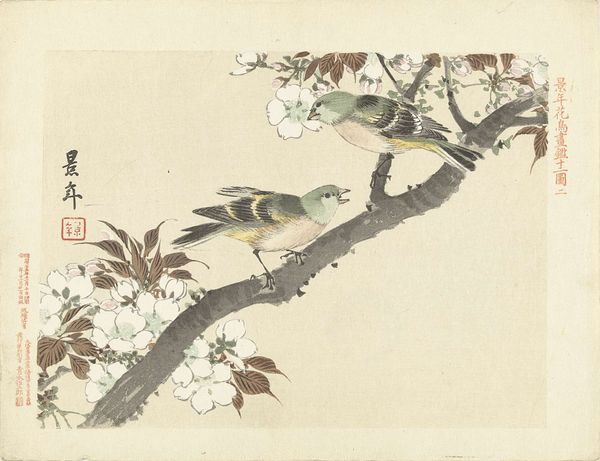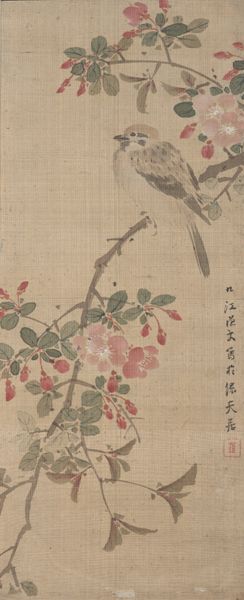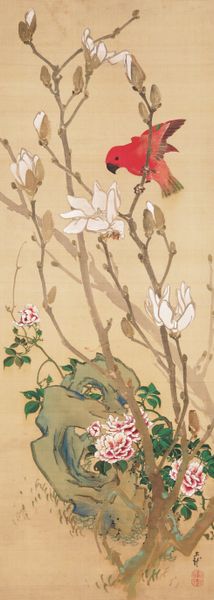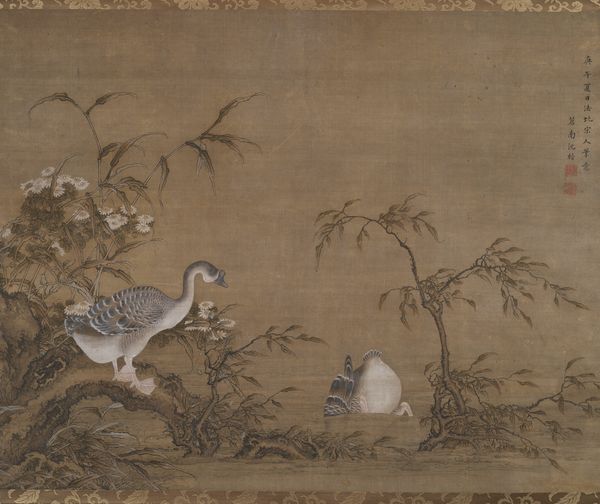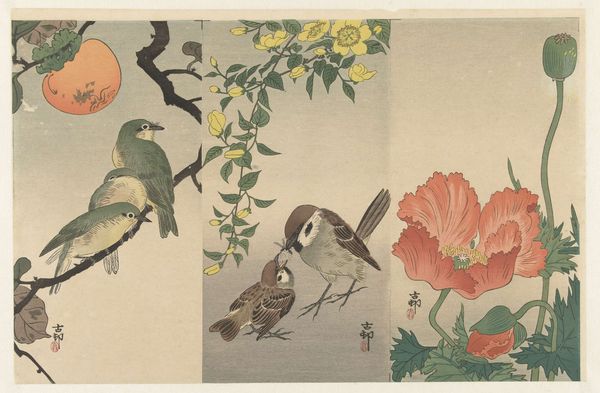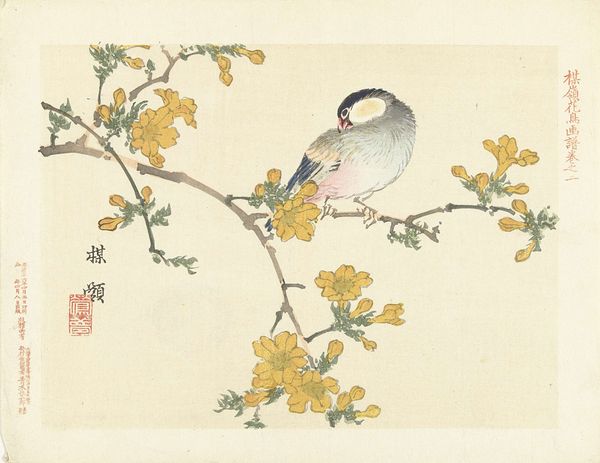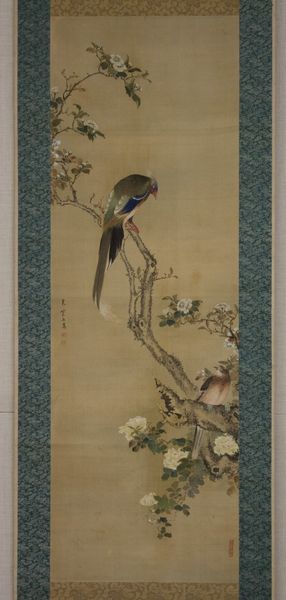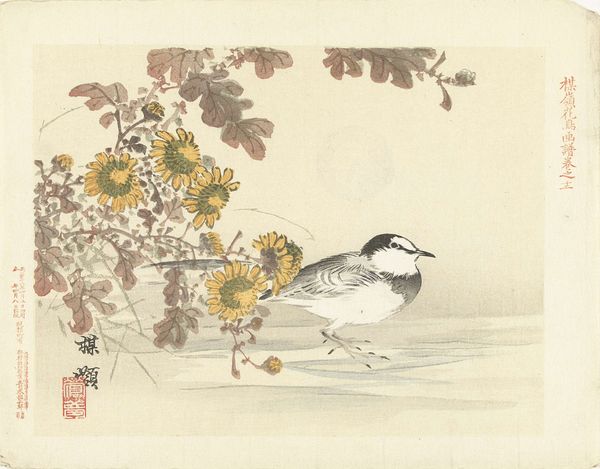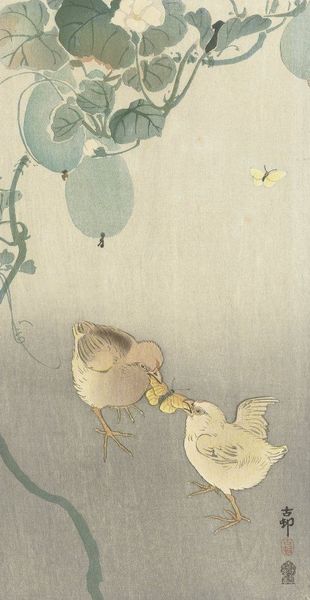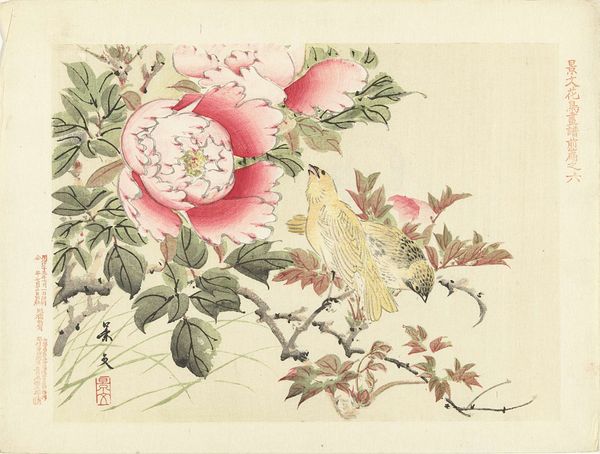
watercolor, ink
#
asian-art
#
landscape
#
bird
#
ukiyo-e
#
figuration
#
watercolor
#
ink
#
orientalism
#
line
#
watercolor
Dimensions: 13 7/16 × 23 3/16 in. (34.13 × 58.9 cm) (image)44 5/8 × 29 1/16 in. (113.35 × 73.82 cm) (mount, without roller)
Copyright: Public Domain
Curator: Looking at “Long-tailed Birds and Roses,” a watercolor and ink piece from the late 18th century by Sō Shiseki. Found at the Minneapolis Institute of Art. Editor: It’s...delicate. And wistful. The pale hues almost make it feel like a memory. There's something melancholic about the scene despite the roses. Curator: Shiseki was a master of detail. See the meticulous rendering of the feathers, the individual rose petals? It's more than just observation; it's like he's inviting us into this intimate world. I love the juxtaposition of the crisp lines of the perching bird and the more fluid strokes used to depict the ripples in the water. What do you make of that contrast? Editor: Well, the positioning is interesting too. One bird is above the water, looking down. Perhaps it sees its future, or its reflection—all these colonial projections about self versus other through natural subjects that served as propaganda for social hierarchies, specifically regarding those of East Asia versus Europe at that moment in time. There's something about that vantage point, the seeming remove... Is it really so far removed or complicit? Curator: I'm struck by the sheer emptiness of the background. That pale wash makes the foreground seem all the more vivid. It gives you this sense of being right there, immersed in the bird’s world. Editor: Absolutely, this stark contrast that draws from philosophies related to nothingness gives rise to different levels of thinking. And for me, that also means considering how these representations and forms of visual communications also made space for Western fascination with Asian cultures—something we have to keep acknowledging. It reflects a moment of immense exchange but unequal power dynamics... Curator: True. Perhaps the stillness asks us to consider what we value and notice when all of the excess is stripped away? This work speaks to that intimate level of understanding nature on a deeper level. And personally, there is so much to keep unpacking when facing what may seem just "surface beauty" here, but actually speaks volumes. Editor: Yes, precisely. “Surface beauty” that belies centuries of complex politics and global reconfigurations… and that are often reflected in how we look at art even now. The piece serves as a reminder that it is a mirror. Curator: Definitely worth a long contemplation, if I can put it that way, despite the fact I have dedicated myself to creating it, haha.
Comments
No comments
Be the first to comment and join the conversation on the ultimate creative platform.


